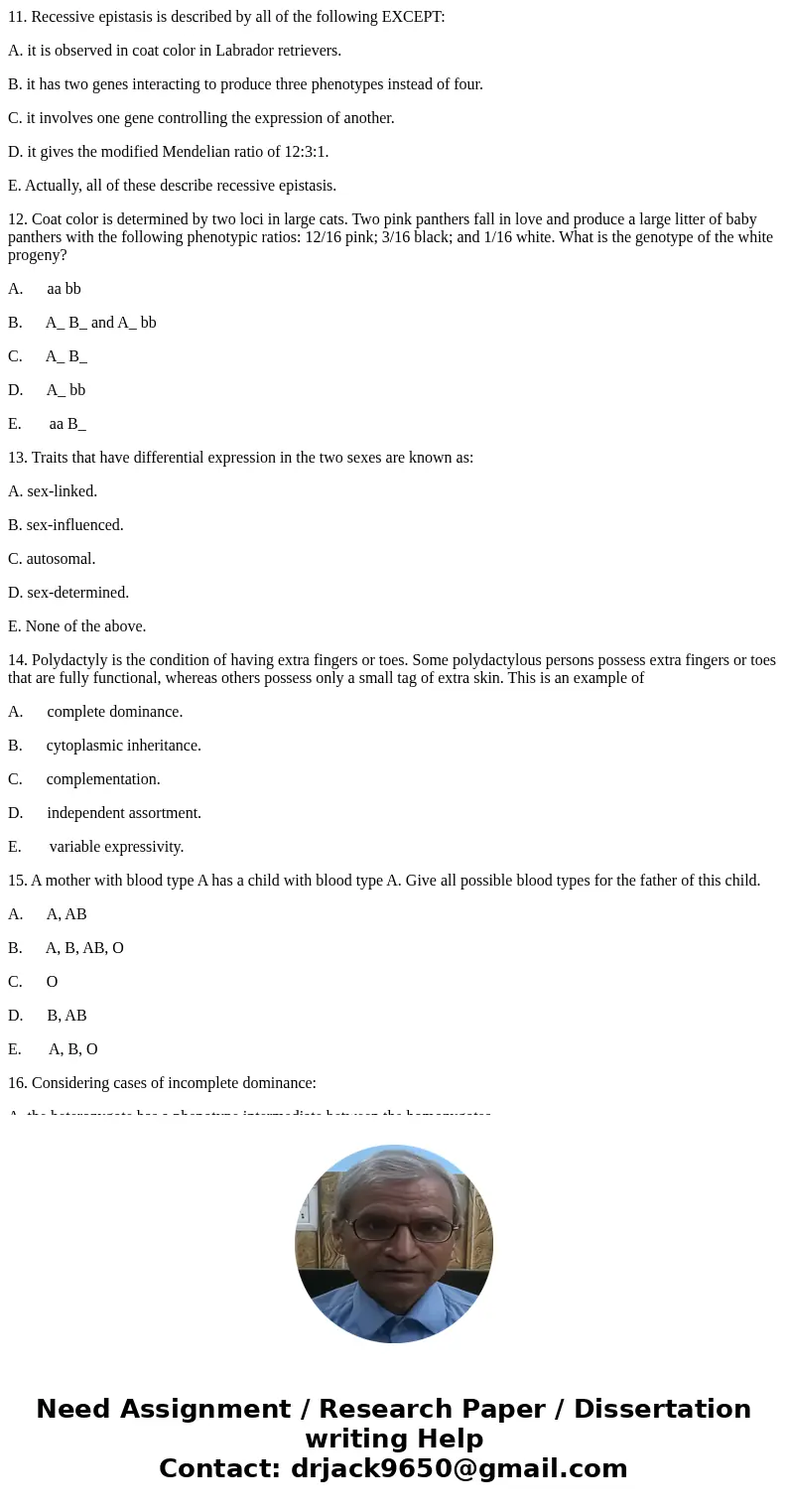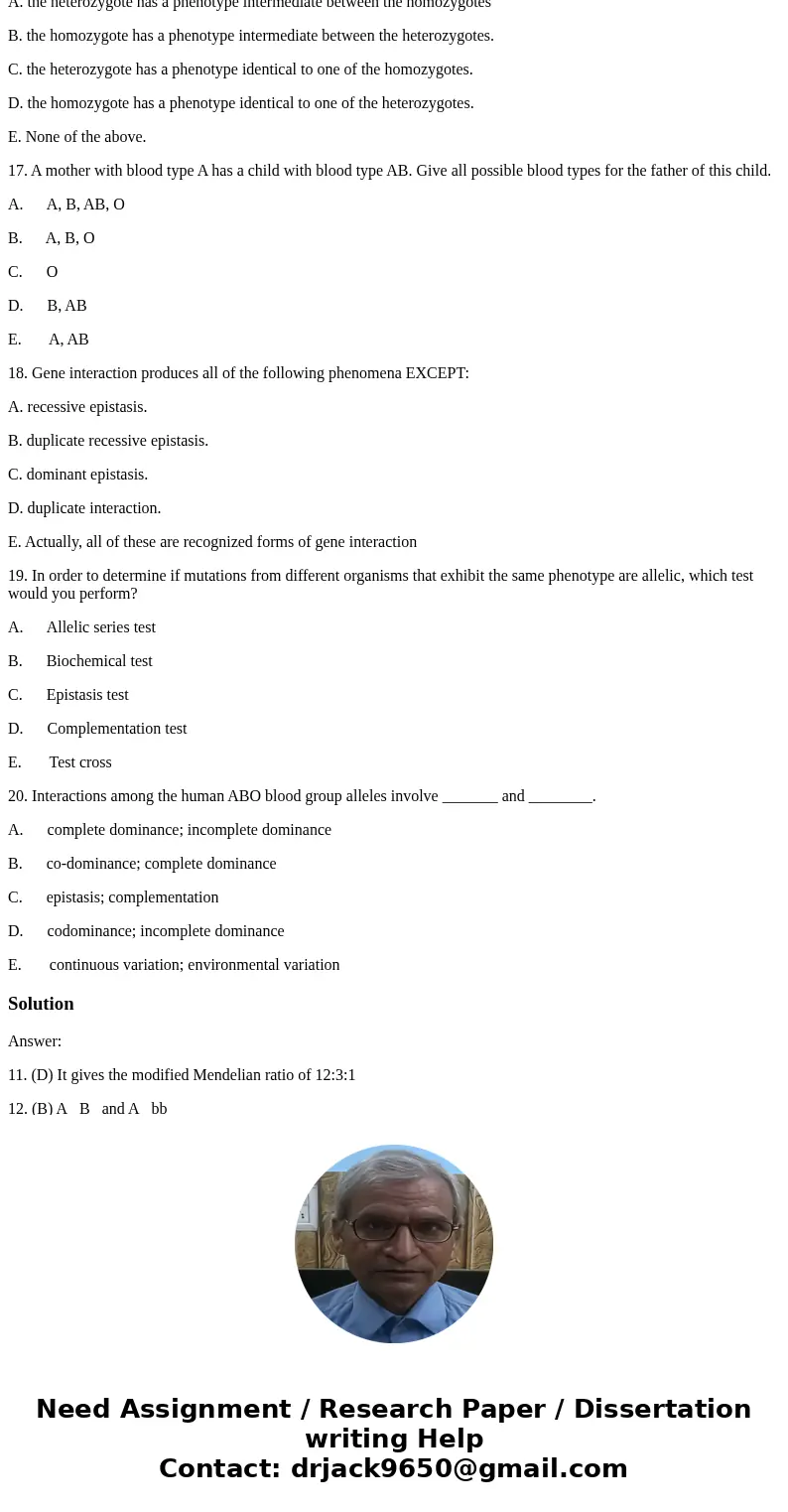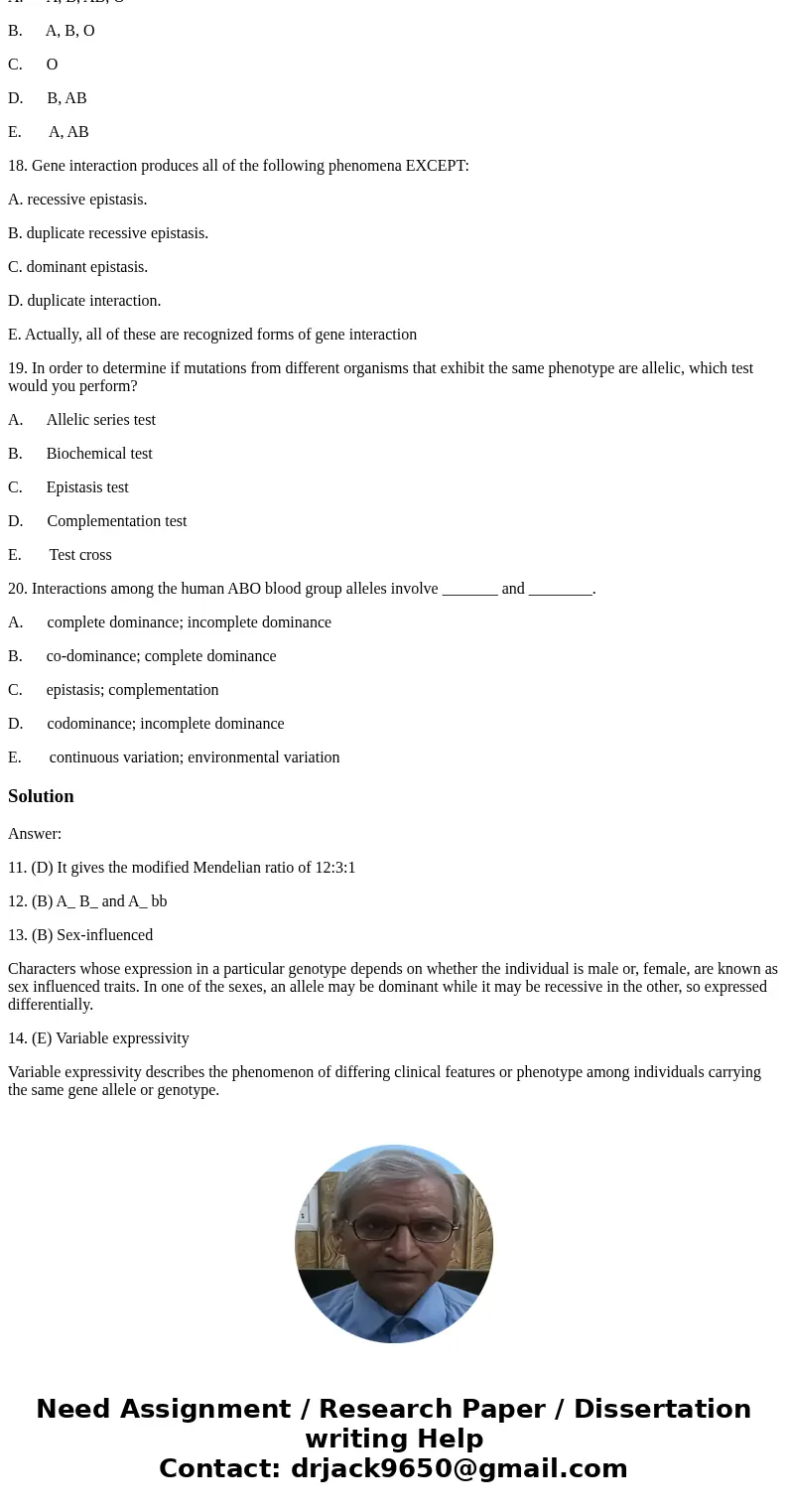11 Recessive epistasis is described by all of the following
11. Recessive epistasis is described by all of the following EXCEPT:
A. it is observed in coat color in Labrador retrievers.
B. it has two genes interacting to produce three phenotypes instead of four.
C. it involves one gene controlling the expression of another.
D. it gives the modified Mendelian ratio of 12:3:1.
E. Actually, all of these describe recessive epistasis.
12. Coat color is determined by two loci in large cats. Two pink panthers fall in love and produce a large litter of baby panthers with the following phenotypic ratios: 12/16 pink; 3/16 black; and 1/16 white. What is the genotype of the white progeny?
A. aa bb
B. A_ B_ and A_ bb
C. A_ B_
D. A_ bb
E. aa B_
13. Traits that have differential expression in the two sexes are known as:
A. sex-linked.
B. sex-influenced.
C. autosomal.
D. sex-determined.
E. None of the above.
14. Polydactyly is the condition of having extra fingers or toes. Some polydactylous persons possess extra fingers or toes that are fully functional, whereas others possess only a small tag of extra skin. This is an example of
A. complete dominance.
B. cytoplasmic inheritance.
C. complementation.
D. independent assortment.
E. variable expressivity.
15. A mother with blood type A has a child with blood type A. Give all possible blood types for the father of this child.
A. A, AB
B. A, B, AB, O
C. O
D. B, AB
E. A, B, O
16. Considering cases of incomplete dominance:
A. the heterozygote has a phenotype intermediate between the homozygotes
B. the homozygote has a phenotype intermediate between the heterozygotes.
C. the heterozygote has a phenotype identical to one of the homozygotes.
D. the homozygote has a phenotype identical to one of the heterozygotes.
E. None of the above.
17. A mother with blood type A has a child with blood type AB. Give all possible blood types for the father of this child.
A. A, B, AB, O
B. A, B, O
C. O
D. B, AB
E. A, AB
18. Gene interaction produces all of the following phenomena EXCEPT:
A. recessive epistasis.
B. duplicate recessive epistasis.
C. dominant epistasis.
D. duplicate interaction.
E. Actually, all of these are recognized forms of gene interaction
19. In order to determine if mutations from different organisms that exhibit the same phenotype are allelic, which test would you perform?
A. Allelic series test
B. Biochemical test
C. Epistasis test
D. Complementation test
E. Test cross
20. Interactions among the human ABO blood group alleles involve _______ and ________.
A. complete dominance; incomplete dominance
B. co-dominance; complete dominance
C. epistasis; complementation
D. codominance; incomplete dominance
E. continuous variation; environmental variation
Solution
Answer:
11. (D) It gives the modified Mendelian ratio of 12:3:1
12. (B) A_ B_ and A_ bb
13. (B) Sex-influenced
Characters whose expression in a particular genotype depends on whether the individual is male or, female, are known as sex influenced traits. In one of the sexes, an allele may be dominant while it may be recessive in the other, so expressed differentially.
14. (E) Variable expressivity
Variable expressivity describes the phenomenon of differing clinical features or phenotype among individuals carrying the same gene allele or genotype.



 Homework Sourse
Homework Sourse